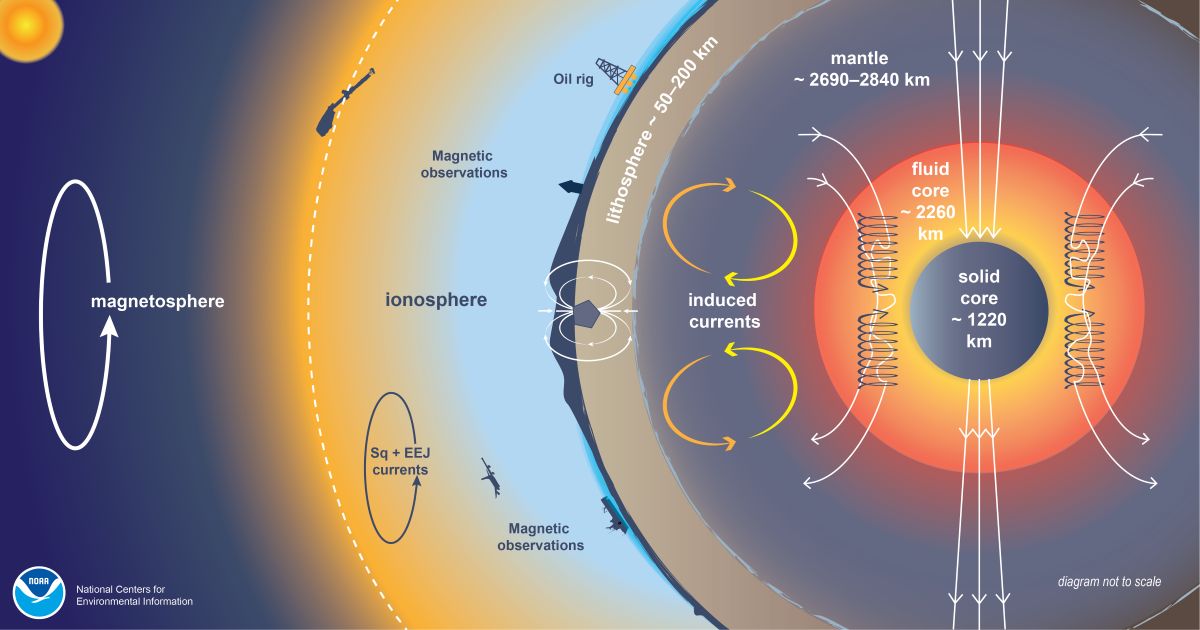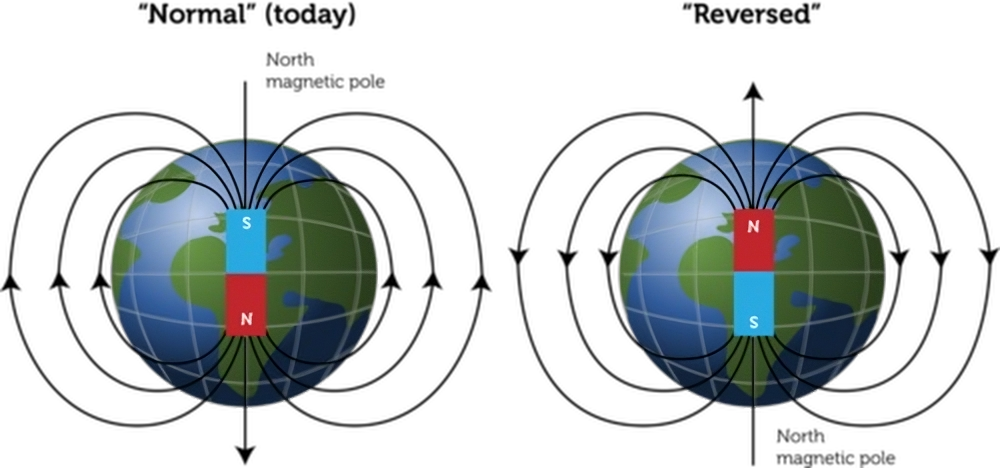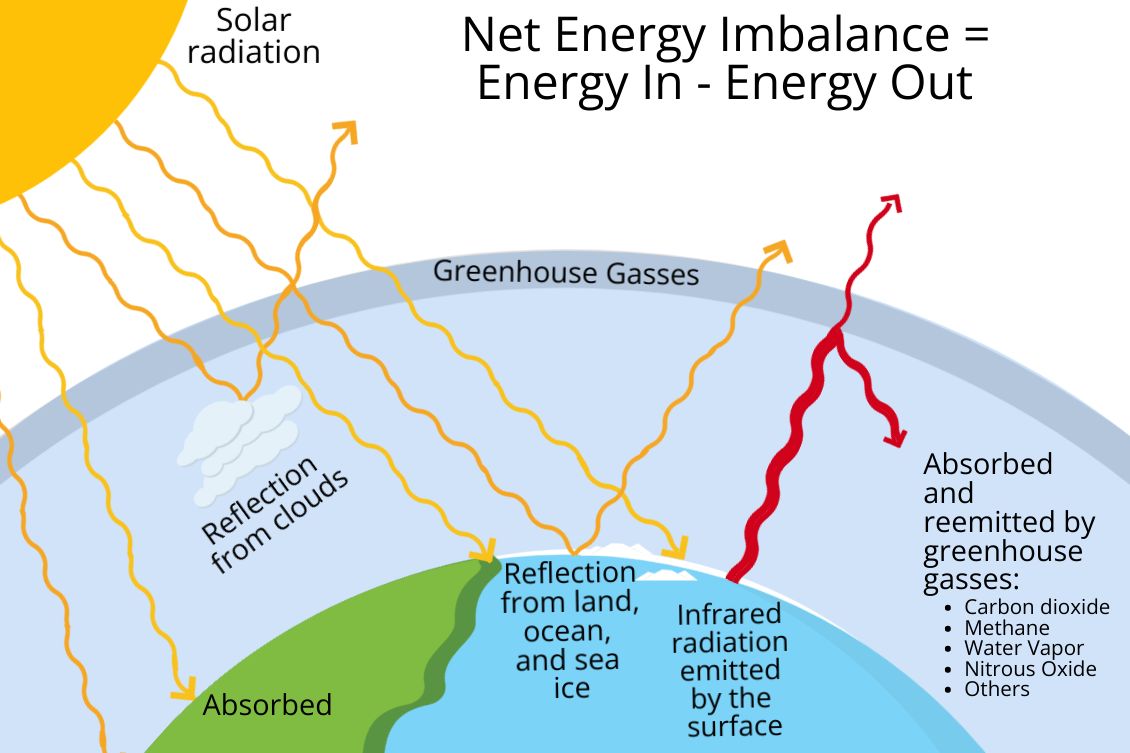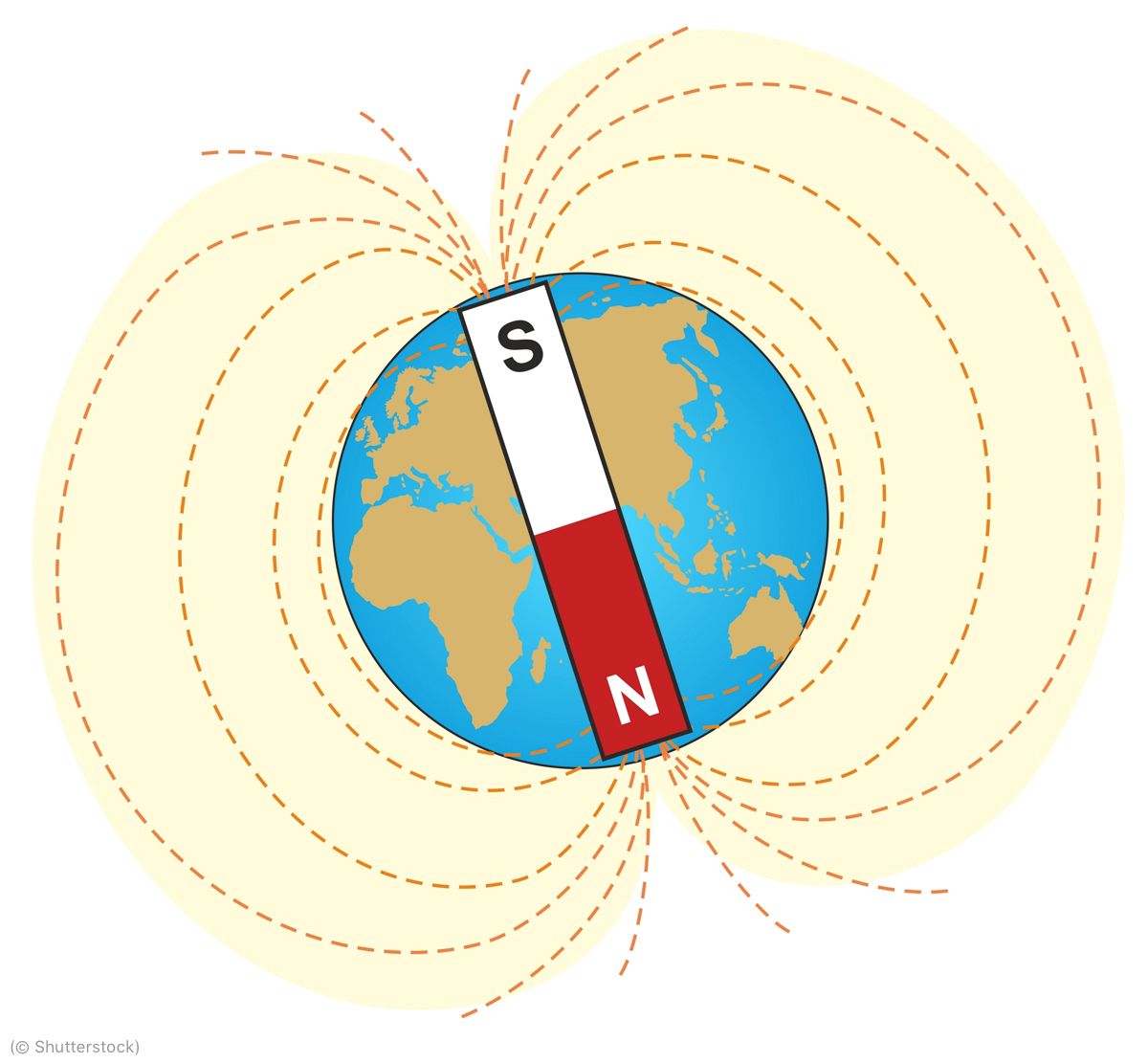
Watch short for this article (5 slides)
Beyond Warming Waters: Could Earth's Shifting Magnetic Field Influence Ocean Currents?
The narrative surrounding changes in global ocean circulation is heavily dominated by the impacts of climate change – warming waters, melting ice altering salinity, and shifting wind patterns are widely recognized as primary drivers reshaping how heat is distributed around our planet. Discussions often center on the potential weakening of crucial currents like the Atlantic Meridional Overturning Circulation (AMOC). However, a less explored but potentially significant factor lies deep within the Earth itself: the geomagnetic field. Some scientific inquiry suggests that interactions between moving seawater and Earth's dynamic magnetic field might exert a subtle but measurable influence on ocean currents, adding another layer of complexity to our understanding of ocean dynamics.

This article delves into the physics behind potential geomagnetic influences on ocean circulation, explores the mechanisms through which these interactions might occur, critically compares their potential scale to dominant climate drivers, and discusses why this factor is often overlooked in climate models and what research is needed to clarify its role.
The Established Framework: Climate Change as the Primary Driver
Before exploring geomagnetic effects, it's crucial to acknowledge the overwhelming scientific consensus on the primary drivers of modern ocean current changes:
- Thermohaline Circulation (THC): Driven by differences in water density (controlled by temperature and salinity). Global warming affects both: surface waters warm, reducing density, while melting glaciers and ice sheets inject fresh water, particularly in polar regions, reducing salinity and density. These changes directly impact the formation of deep water and the strength of large-scale overturning circulations like the AMOC.
- Wind Stress: Surface currents are largely driven by prevailing winds. Climate change alters atmospheric circulation patterns, affecting wind strength and direction, which in turn modifies surface ocean currents and contributes to phenomena like changes in coastal upwelling.
- Ocean Eddies and Mixing: Climate change can alter the intensity and location of ocean eddies (large swirls of water) and processes that mix water layers, further influencing circulation patterns.
These climate-related factors are responsible for the large-scale, observable changes currently concerning scientists, such as slowdowns in major currents and shifts in heat transport. (NOAA - Ocean Currents Education)
The Geomagnetic Hypothesis: An Interaction Beneath the Waves
The hypothesis that Earth's magnetic field influences ocean currents stems from fundamental physics, specifically **Magnetohydrodynamics (MHD)** – the study of the dynamics of electrically conducting fluids moving in the presence of magnetic fields.
- Conductive Seawater: Ocean water is not a perfect insulator; dissolved salts (ions like Na+, Cl-, Mg2+, SO42-) make it electrically conductive, albeit significantly less so than metals or plasmas.
- Motion Through a Magnetic Field: As this conductive seawater flows through Earth's geomagnetic field lines, an electromotive force (voltage) is induced across the current, according to Faraday's law of electromagnetic induction. This is analogous to how a generator works.
- Induced Electric Currents and Fields: This induced voltage drives weak electric currents within the ocean and sets up electric fields.
- The Lorentz Force: The crucial step – the interaction between these induced electric currents flowing within the seawater and the Earth's magnetic field generates a **Lorentz force**. This force acts perpendicularly to both the direction of the current flow and the magnetic field lines.
- Potential Impact on Flow: Theoretically, this Lorentz force acts as a drag or a deflecting force on the moving water. While typically small compared to other forces driving ocean currents (like pressure gradients and wind stress), the hypothesis suggests it might be non-negligible under certain conditions or over long timescales. (Physics Stack Exchange Discussion on MHD in Oceans provides conceptual context).
Mechanisms of Geomagnetic Influence: How Might It Work?
Researchers exploring this link propose several ways the geomagnetic field could affect circulation:
- Direct Lorentz Damping/Deflection: The primary mechanism involves the Lorentz force acting as a subtle brake or turning force on large-scale flows. The magnitude of this force depends on the conductivity of the water, the speed of the current, and the strength and orientation of the local magnetic field.
- Geomagnetic Secular Variation: Earth's magnetic field is not static; it constantly changes over decades and centuries (secular variation), including shifts in intensity and the location of the magnetic poles. These changes could slowly alter the magnitude and direction of the Lorentz force acting on currents, potentially leading to subtle, long-term adjustments in circulation patterns.
- Geomagnetic Reversals and Excursions: Over much longer timescales (tens of thousands to millions of years), Earth's magnetic field undergoes reversals (flipping polarity) and excursions (large deviations in direction/intensity without a full flip). During these periods, the field strength significantly weakens. A weaker field would mean a weaker Lorentz force, potentially allowing currents to flow differently than during periods of strong field strength. Correlating paleomagnetic data with paleoceanographic records is one way researchers attempt to investigate this, though isolating the magnetic signal from other long-term climate changes is extremely difficult.
- Localized Magnetic Anomalies: Earth's crust contains localized areas with stronger or weaker magnetic fields (magnetic anomalies). It's hypothesized that currents flowing over these anomalies might experience localized variations in the Lorentz force, potentially influencing regional circulation patterns or mixing. The suggestion that fluctuations in the Florida Current *might* have geomagnetic links often arises in this context, though strong causal evidence remains elusive and debated.
Putting it in Perspective: Comparing Climate and Geomagnetic Forcing

While the MHD mechanism is physically valid, a critical question is its *magnitude* relative to dominant climate drivers.
| Factor | Climate-Induced Changes (Temperature, Salinity, Wind) | Potential Geomagnetic-Induced Changes |
|---|---|---|
| Primary Drivers | Solar energy input, greenhouse gas concentrations, atmospheric/oceanic heat & freshwater transport, wind patterns. | Earth's internal geodynamo generating the magnetic field, interaction of field with moving conductive seawater (Lorentz force). |
| Magnitude of Force on Large Currents | Dominant forces (pressure gradients due to density differences, wind stress friction). | Generally considered much weaker; a secondary or tertiary effect compared to pressure gradients and wind stress for large-scale flows. |
| Timescales of Change | Observable changes occurring now on decadal to century timescales (e.g., AMOC slowdown, surface warming). | Secular variation occurs over decades/centuries but effects may be subtle. Reversals/excursions operate on geological timescales (thousands to millions of years). |
| Observational Evidence | Strong, direct evidence linking rising CO₂, temperatures, ice melt, and observed changes in ocean currents and heat content. | Evidence is indirect, often based on theoretical modeling, challenging paleoclimatic correlations, or localized anomalies where separating signals is difficult. No widely accepted "smoking gun" observation for large-scale currents. |
Most mainstream oceanographic and climate research considers the direct MHD effect on large-scale ocean circulation to be minor compared to the overwhelming influence of thermodynamic and wind-driven forces currently being altered by anthropogenic climate change.
The Modeling Gap: Why Geomagnetism is Often Excluded

Global Climate Models (GCMs) and Earth System Models (ESMs) are incredibly complex, simulating interactions between the atmosphere, oceans, land surface, and cryosphere. However, they typically do not include the MHD equations governing geomagnetic interactions with ocean currents.
- Perceived Small Magnitude: The primary reason is the scientific consensus that the effect is likely too small to significantly impact the large-scale climate dynamics the models aim to capture, relative to the major climate forcings.
- Computational Cost: Adding complex MHD calculations for the entire global ocean would significantly increase the computational resources required to run these already demanding models.
- Complexity and Uncertainty: Accurately modeling the interaction requires precise data on ocean conductivity (which varies) and the magnetic field, adding further complexity.
Researchers advocating for its inclusion argue that even small, persistent forces could have cumulative effects over long timescales or might modulate regional dynamics in ways currently missed, potentially improving model fidelity under certain conditions or for specific research questions (e.g., long-term paleoclimate simulations).
Charting the Unknown: The Path Forward
To better understand the true role, if any, of geomagnetism in ocean circulation, several research avenues are needed:
- Enhanced Observations: Deploying more sensitive instruments, possibly including satellite missions designed to measure the weak electric fields generated by ocean currents moving through the geomagnetic field (ocean-induced magnetic fields), could provide crucial data to quantify the effect. Projects like the European Space Agency's Swarm mission, which measures Earth's magnetic field, provide valuable data that can be used for such studies.
- Targeted High-Resolution Modeling: Developing regional ocean models that *do* incorporate MHD effects for specific areas where the influence might be stronger (e.g., fast currents like the Gulf Stream or Antarctic Circumpolar Current, areas over strong magnetic anomalies) could test hypotheses and quantify impacts locally.
- Paleoceanographic Correlations: Continued efforts to find robust correlations between high-resolution paleomagnetic records (tracking past field changes) and independent paleoceanographic proxies (indicating past current strength or path) are needed, while carefully accounting for concurrent climate changes.
- Interdisciplinary Collaboration: Closer collaboration between geophysicists (experts in Earth's magnetic field), oceanographers (experts in ocean dynamics), and climate modelers is essential to bridge knowledge gaps and integrate insights.
Conclusion: An Intriguing Variable in a Complex System
While climate change remains the undisputed primary driver of contemporary changes in ocean circulation, the potential influence of Earth's geomagnetic field presents an intriguing, albeit likely secondary, factor. The underlying physics of magnetohydrodynamics confirms that an interaction must occur, but its magnitude and significance for large-scale currents compared to powerful climate forces remain subjects of ongoing research and debate. It is unlikely to overhaul our fundamental understanding of climate change impacts, but incorporating this factor could potentially refine long-term projections or explain certain regional anomalies. Further investigation, leveraging improved observational technology and targeted modeling, is necessary to determine whether the subtle pull of Earth's magnetism plays a truly meaningful role in the grand theater of ocean circulation.